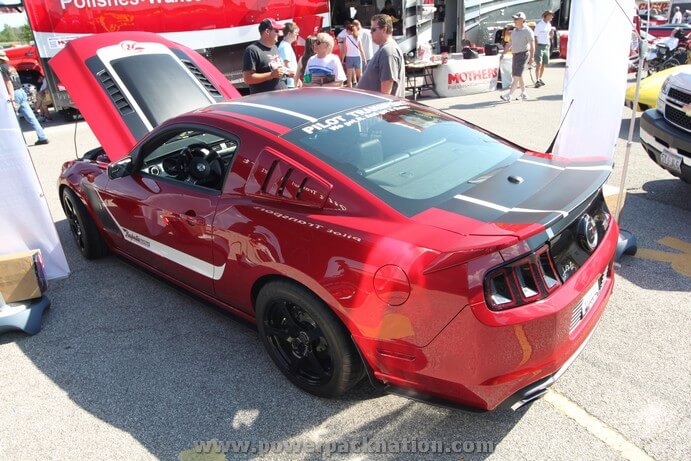Lightweight Battery Options

- Sponsor
- OPTIMA Batteries
- Location
- Milwaukee, WI


We print our 800 number (888-8-OPTIMA) and our e-mail address (info@optimabatteries.com) on every battery we sell, but sometimes folks want their questions answered here and we're happy to oblige. Today's question comes to us all the way from the Middle East, where HBK asks:
I have a 2001 Mustang that been lightened extensively and I am interested in shedding as much weight as I can. I live in the Middle East, so the heat is extreme and my engine is supercharged. I drive the car semi-daily. What would be my best option?
There are a couple of things to consider with this application. The first is that when talking about lead-acid batteries, physically smaller batteries will generally have less cranking power or reserve capacity. They may still be able to start your supercharged engine, but they may get discharged more deeply doing that or providing power for other accessories. The more deeply a battery is discharged, the fewer cycles it will generally offer. Since you drive the vehicle on a semi-regular basis and it is very hot where you live, you may ask more from your battery than most vehicle owners in terms of electrical demands. We know a lot of Mustang owners like underdrive pulleys, but they can prevent your alternator from maintaining proper voltage in your battery. If you run your air-conditioning and stereo while you are driving and you have an underdrive pulley that doesn't allow the alternator to maintain voltage, you may be slowly discharging your battery while driving your car. Add a smaller battery with less reserve capacity into the mix and this process could be accelerated.
Secondly, batteries don't do well in high-heat environments, so you may want to consider relocating your battery to an area outside of your engine compartment. However, if you do relocate your battery to the interior or trunk of your car, make sure it is properly-vented to the outside air, in the unlikely event that it gets overcharged and begins venting toxic and flammable gas. Most folks use sealed battery boxes with vent tubes directed outside the vehicle to accomplish this task. If you do relocate your battery to keep it away from engine compartment heat, be sure to use quality wiring.
You should also determine how much these changes may cost you in terms of weight. Moving a lighter battery to the trunk may not save you much weight at all, if you have to add in the weight of a battery box and six or seven feet of battery cable to run the connection back to your engine compartment.
Lithium batteries may be able to provide you with significant weight savings without significant performance loss, but that could come with a significantly higher price tag and you'd only want to consider reputable brands with a long track record and a physical presence (some lithium brands are being sold out of homes or rented PO boxes). You may also want to make sure your battery is compatible with your vehicle's charging system. Some lithium products may require specific battery chargers designed for those products.
At the end of the day, you should ask yourself why weight reduction is so important on a vehicle you drive on a semi-daily basis. If you're worried about the load-bearing capacity of a rickety old bridge you travel over, you may want to reconsider whether you even want to put your Mustang in such a potentially dangerous situation and consider alternate routes. If you want the lightest possible car for racing, consider using a smaller battery just for racing situations and a larger, heavier battery for everyday driving. Whatever battery you end up selecting, make sure you always maintain proper voltage whenever possible. For OPTIMA REDTOP batteries that would be about 12.6-12.8 volts, while YELLOWTOP batteries should measure about 13.0-13.2 volts.
